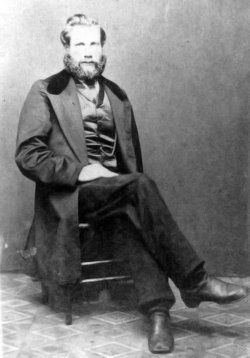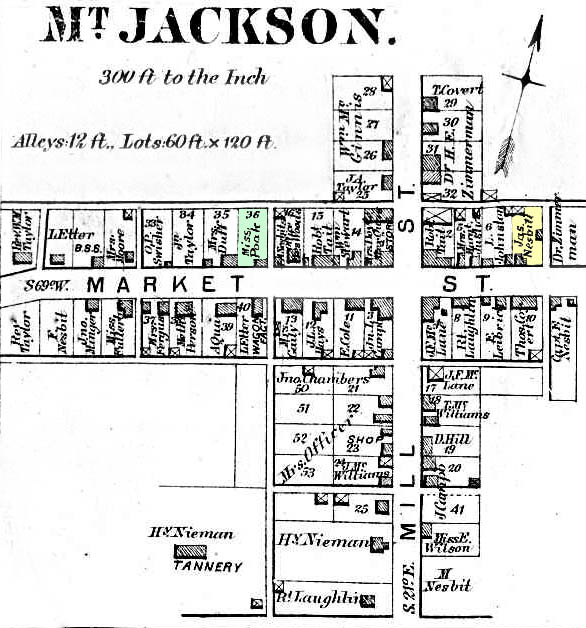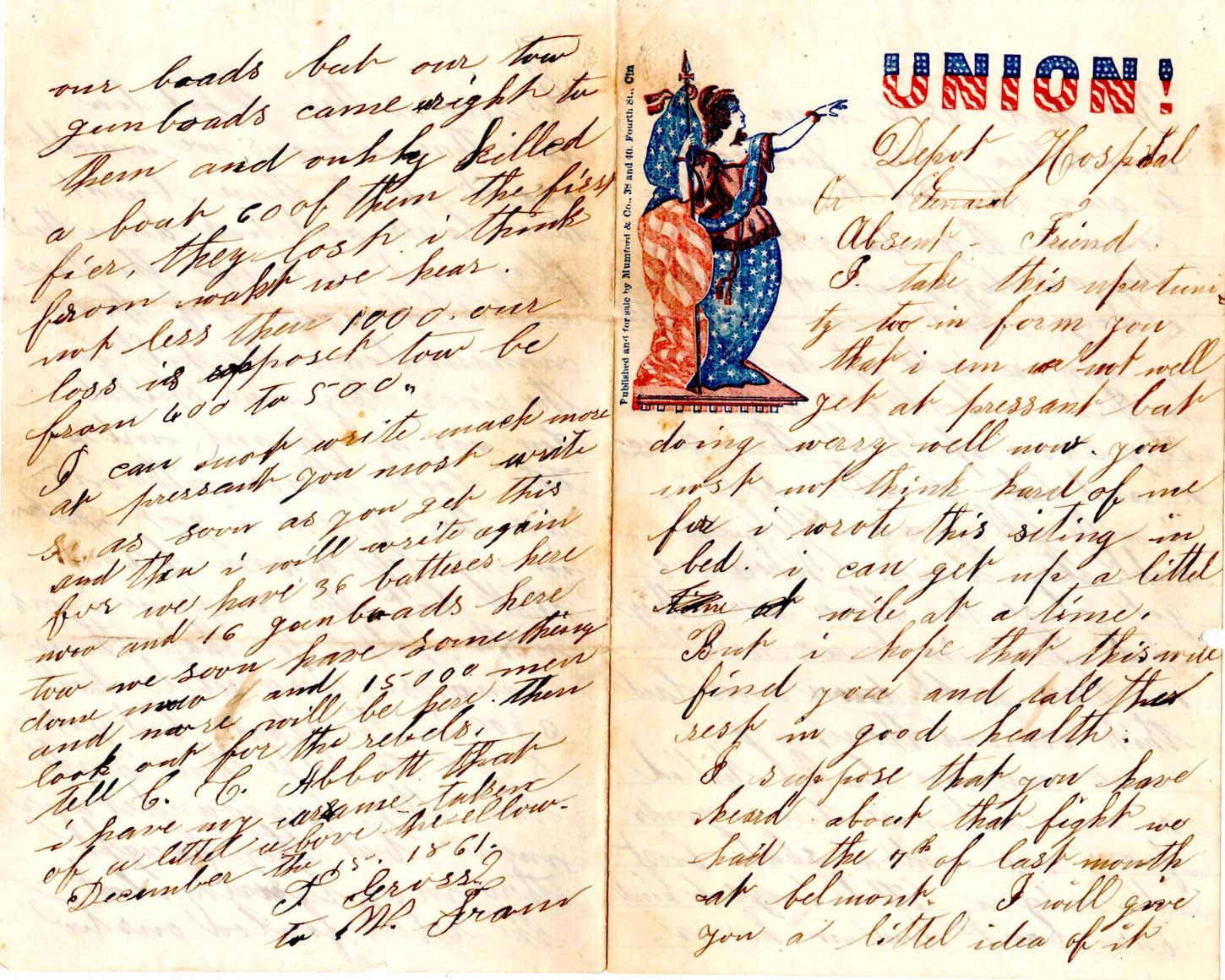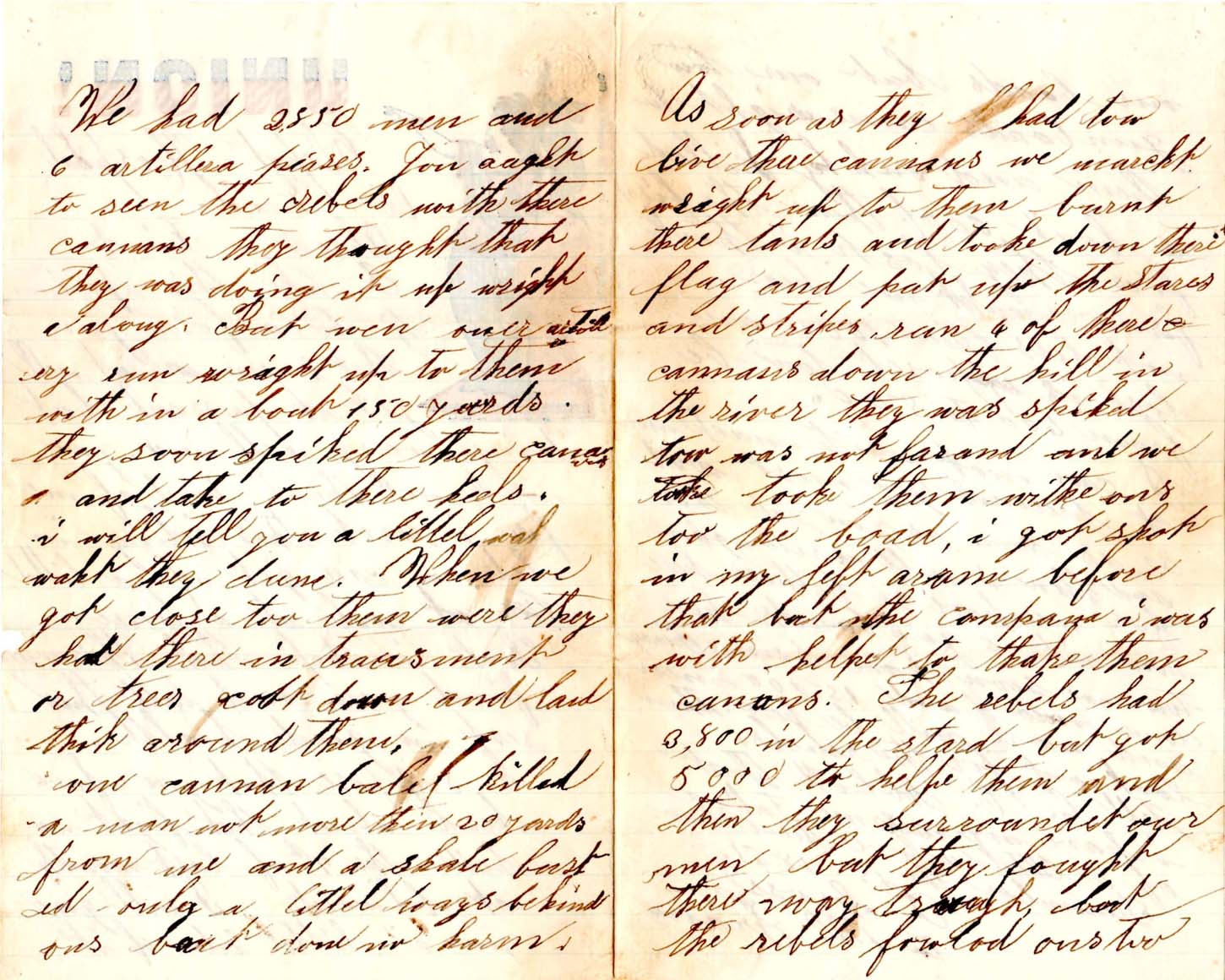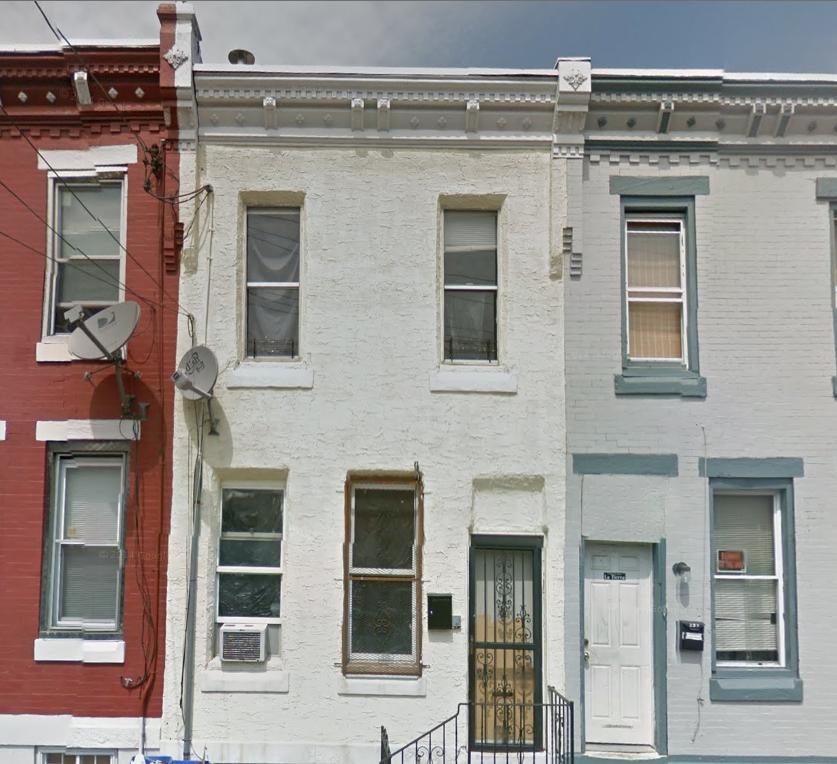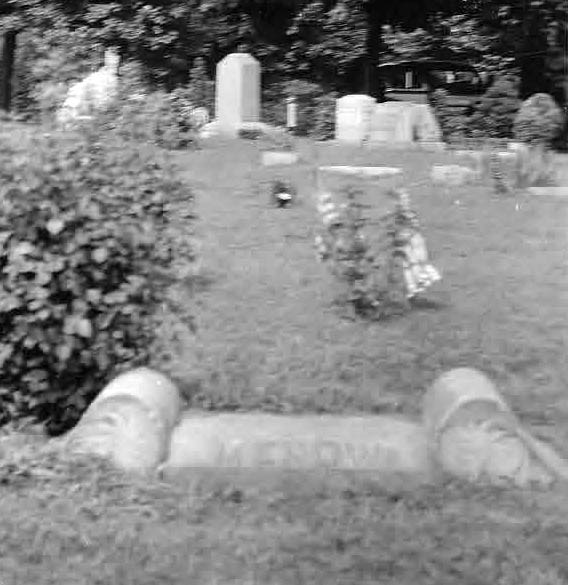Theobald was born on August 18, 1840, most likely in the family home in the village of Sippersfeld, Donnersbergkreis, Rhineland-Palatinate, Germany. He was christened on August 23 at the Protestant Church in Sippersfeld. His parents were Johann Ludwig Gross, called “Ludwig,” and Susanna Maria Rohrbach, from Austria. They had been married in the Protestant Church in Sippersfeld on February 6, 1820. Ludwig had been christened in that same church on April 19, 1790, the son of Johann Gross and Maria Barbara Scholl (also spelled Schollin).
On May 1, 1849, Theobald’s father died, and his mother died on May 15, 1850, both in Sippersfeld. Theobald was only ten, so his married brother Peter took him into his home. Peter was born July 14, 1827, and died July 12, 1909, both in Sippersfeld.
Excerpts from The Gross Family, by Evelyn Potter Park
When Theobald was twelve he ran away to a port because he felt unwanted in his brother's home. Apparently his brother had a family of children and Theobald represented just one more mouth to feed. However, his brother Peter followed him and arranged with the captain of a sailing vessel for Theobald to work his way to America. It is not known how he managed to make his way to Canton, Ohio where he had a cousin named Louis Will.
Louis Will found Theobald a home with a kind elderly couple. They were a doctor and his wife, Hannah. Later Theobald named a daughter Hannah in memory of that kind lady. Theobald went to school and finished his education and also learned to speak English. It was his duty to take care of the doctor's horse and buggy, and often drove him on his rounds when not in school.
After Theobald finished his education he went to Mercer County, Illinois. He farmed in the summer and taught school during the winter months.
On August 13, 1861 he enrolled [in the Union army] at Aledo, Illinois and was mustered into service August 29, 1861 at [Camp Butler near] Springfield, Illinois as a private in Co. A, 30th Illinois Infantry to serve for three years. [His unit was mustered into service on September 18.] He was shot during the Battle of Belmont, Missouri on Nov. 7, 1861, only a little more than two months after he began his service. He had his arm amputated twice, the first time in the forearm and the next time above the elbow. His military description: 21 years of age, height 5 ft. 6 ½ inches, complexion fair, eyes blue, hair light, occupation farmer, [marital status single, nativity Sipperfeldt, Germany]. He was honorably discharged as a private Dec. 27, 1861 on a surgeon's certificate of disability because of his wounds. He returned to Aledo, Illinois and again taught school.
It was at Aledo that he met Margaret Ann Morehead, [the niece of his former employer Mary Witherspoon Huffman,] who was teaching in an adjoining school district to the one in which he taught. They were married and established their home on Theobald's small homestead. They prospered and during those early years four children were born, one of whom died and was buried at Eliza. Margaret Ann's father had written them wanting them to come to Texas where he was then living. Thinking a warmer climate might be more healthful, [in 1874] they sold their farm, chartered a railroad car and shipped livestock, machinery and household goods to Ft. Worth, Texas.
They were met at the train by James Morehead, Margaret Ann's father. James Morehead had offered to give them his farm if they would come to Texas. James’ Uncle [“Jimmy”] Morehead from Defiance, Ohio was visiting there at the time, and soon afterward they [James and Jimmy] left to return to Defiance. They went by the home of James Morehead's wife, Drusilla, and their son Washington Morehead in Clay County, Kansas. James is said to have died at Defiance, but no record of his death and burial has been found.
The farm in Texas was located near the Trinity River and the climate proved to be anything but healthful. Both sons died there. Luther died of meningitis and little Theobald died of diphtheria. The heat and malarial infection brought on a recurrence of dysentery for Theobald that had been contracted during his war service. Needing hospitalization and medical care, it was decided he should enter a veteran’s hospital. He took Margaret Ann and their two daughters, Lissie and Clemmie, to Sherman, Texas so that the girls could attend school. While living there Margaret Ann took pneumonia and died March 1, 1881. The Presbyterian minister and his wife took the little girls into their home until arrangements could be made to send them by train to their grandmother, Drusilla Witherspoon Morehead in Clay County, Kansas.
When they arrived in Clay Center Lissie had the mumps. Word had not reached their grandmother and Uncle Wash about when they would arrive, so no one met them at the train. The conductor made arrangements with a lady who had a boarding house to take care of them until word could be sent to their grandmother. Lissie remembered the long cold trip in a wagon to the farm some 20 miles north of Clay Center.
In the meantime, Theobald had entered the National Home for Disabled Veterans, Central Branch, at Dayton, Ohio on December 8, 1880. [He was transferred among the different branches of the Home for Disabled Volunteer Soldiers and was finally discharged from the Eastern Branch in Maine on Sept 26, 1883.] He traveled quite a lot during the next ten years. In 1883 he was in Albany, New York; in July 1884 he was at Bath-on-the-Hudson and after that in New York City [finally settling in Philadelphia]. He loved beautiful things and when writing to his daughters he told them of things he had seen and places he had been.
On January 10, 1892 Theobald Gross was married to Susan Swickey in Camden, New Jersey. She was born in 1851 and was the daughter of John Swickey [and his wife Susanna, who were Swiss German]. Theobald had gone to Philadelphia in 1886 and it was there they established their home. He wrote of their beautiful flowers and canaries. Theobald died August 8th, 1913 of hardening of the arteries at his Philadelphia home and was buried in Mount Peace Cemetery. He had no children by his second marriage.
Additional notes from Darrell Brown:
Theobald’s cousin Ludwig Will, known as Louis, was the son of his aunt Katharina Gross and her husband Johan Ludwig Will. He was born on June 27, 1832, in the same village where Theobald was born in 1840, but the Will family emigrated to America soon after his birth. So Theobald would not have known Louis personally while in Germany. Louis married in 1859 and moved to Weathersfield, near Canton, Ohio, but when Theobald came to him in 1852, Louis was living in a rooming house in Pittsburgh, Pennsylvania, and made chairs for a living.
Theobald probably arrived by ship in Philadelphia, then traveled either by train or canal to Pittsburg, to the home of his cousin Louis Will. Family tradition says that Louis found a home for him with an elderly physician and his kindly wife, and that Theobald drove the doctor in a buggy to visit patients. Tradition has preserved neither the name nor the location of the family with whom Theobald lived after coming to America, but a letter from a friend of his, David Poak. says he was living in the home of James and Nancy Nesbit, which was in Mount Jackson, Lawrence County, Pennsylvania, just up the Beaver Canal from Pittsburg. (See Matthew Anderson (ed.), Dear Sister Sadie: The Letters of David W. Poak, Createspace Independent Pub, 2014, p. 83.) James had a brother Allen Nesbit who lived near him and was a physician, the only one in the village, so this is most likely the medical doctor for whom Theobald worked as a carriage driver.
In the 1850s some people moved from Lawrence and Beaver Counties to Mercer County in Illinois, including Henry and Mary (Witherspoon) Huffman (the aunt of Theobald’s future wife), who established a farm near Millersburg in Mercer County. Around 1858-59, about a dozen young men moved to that region as well, including Theobald and his friend David Poak. Both of them took teaching jobs in or near Millersburg.
The Civil War broke out, and on August 12, 1861, Theobald and David Poak enlisted in the Union Army, in Company A of the 30th Illinois Infantry. Theobald had just turned 21, and David was roughly the same age. Their company was drawn from Mercer County and included other young men who had recently moved there from Lawrence County, Pennsylvania.
On September 1, they were deployed to Cairo at the confluence of the Ohio and Mississippi Rivers, both of which were vital shipping lanes. Most likely this was Theobald’s first experience learning to use firearms, and according to a letter of David Poak, Theobald accidently discharged his musket and shot a man, but “fortunately it was only a flesh wound.”
The regiment’s first action was at the Battle of Belmont on November 7, 1861, under the command of Ulysses S. Grant. Theobald was seriously injured in the arm, which had to be amputated. On December 15, while recovering from the amputation of his left arm, he wrote a letter to a friend describing the successful battle, mentioning only at the end that he had lost an arm. (See in photo section.) On December 27th he was discharged from the army, and on New Year’s he returned to Mercer County but unable to do farm work, he settled in the town of Aledo.
As a disabled veteran, Theobald received a pension of eight dollars per month, beginning in March, 1862. These were received from the pension office in Springfield, Illinois, until March, 1866, after which he was switched to the office in Chicago. At some point he learned to be a photographer and set up a studio. In September of 1862, Theobald enrolled in Monmouth College and completed one academic year of studies. Afterwards he began working as a teacher. Meanwhile, in 1861 or 1862, Mary Huffman, on whose farm Theobald had been living in 1860, returned to Pennsylvania by train to see her relatives, and she came back with her niece Margaret Ann Morehead, who began working as a teacher in a country school near Aledo. It is not known if Theobald and “Maggie” had known each other in Pennsylvania, but family tradition says they met while both were teachers near Aledo. Certainly that is where they became engaged.
On November 2, 1864, Theobald and Margaret Ann were married. They seem to have settled in Walnut Grove, now called Altona, which is 37 miles east of Aledo, because in May, 1865, Theobald was charged an excise tax on his work there as a photographer. Most likely he is the one who took the photographs we have of him and Maggie. Of special note is a large tintype portrait of Maggie on which the face was tinted and everything else painted over. In August of 1865 they had a son, Luther Theobald Gross.
Later the family moved to a small farm in Eliza Township in Mercer County, a few miles northwest from Aledo. Census records and historical land maps indicate that the Gross farm was probably the one located in section five of Eliza township, just north of Miller Cemetery on what is now 58th Street. On the east it adjoined a farm belonging to Joseph Reed. After the death of Margaret Ann's grandfather John Witherspoon in Pennsylvania in 1867, her mother Drusilla Witherspoon Morehead, her brother Washington Morehead, and her sister Mary Clementine “Clemmie” left Pennsylvania and joined them in Illinois. That same year Theobald’s wife Maggie gave birth to a daughter, whom they named Hannah Clementine Gross. In March, 1870, she gave birth to another daughter, Lissie Drusilla Gross. That same year Margaret’s sister Clemmie married John Reed, the son of Joseph Reed, who lived on the neighboring farm. Soon afterwards Theobald's niece Catherine Gross came to America by herself and joined them, probably helping with the children and chores.
In 1873, Clemmie and John Reed moved to Kansas. Then Drusilla and Washington Morehead moved to Clay County, Kansas, where they are found in the 1875 census. On November 11, 1873, Theobald’s wife Maggie gave birth to a girl, named Mary Adrianna Gross. Sadly, she died nine months later, on August 16, 1874. Later that year Theobald and family left Illinois and moved to Paradise in Wise County, Texas, where Margaret's father had a farm that he left in their care. Theobald’s niece Catherine moved with them and subsequently married someone in Tarrant County, Texas; nothing more is known of her.
The family suffered illnesses in Paradise. Their oldest son Luther died in 1878. In February 1879 they had a son Henry, but he died six months later. Theobald himself is said to have suffered from illnesses contracted during the war, and having only one arm, the farm work must have worn him down. The civil war had left large numbers of veterans suffering from physical disabilities and chronic dysentery, so the federal government created the “National Home for Disabled Volunteer Soldiers” under a department that eventually became the Veteran’s Administration. Theobald wanted to seek treatment there, so he presumably sold the farm and in 1880 settled his family in Sherman, where their two surviving children could attend school. Theobald’s old friend David Poak lived in Sherman as well, where he was vice-president of a bank. Then Theobald traveled to Dayton, Ohio, where on December 8, 1880, he was admitted to the Central Branch of Home for Disabled Volunteer Soldiers. His disability was listed as “loss of left arm,” and his pension was listed as $24 per month. His previous residence was listed as Wise County, Texas, where he was a farmer, and his wife and two children were listed as living in Sherman, Texas.
Tragically, less than three months later, on March 1, 1881, his wife Margaret Ann died in Sherman of pneumonia, and their two daughters were sent to Kansas to live with their grandmother Drusilla Morehead and their uncle Wash Morehead.
In May, 1881, Theobald was transferred to the Northwestern Branch of the National Home in Milwaukee, Wisconsin. There he listed his nearest relative as Washington Morehead, Peach Grove, Clay County, Kansas. Washington and his mother Drusilla Morehead were looking after Theobald’s two daughters, at least until Washington got married in March, 1883.
On July 31, 1881, Theobald was transferred to the Eastern Branch at Togus, Maine. He passed through the city of New York, where on August 15, 1881, he was naturalized as an American citizen. Afterwards his transfer to Togus as cancelled and he returned to the Northwestern Branch, then later to the Central Branch in Ohio. In January, 1883, he was transferred to the Southern (Roseburg) Branch in Hampton, VA, where he listed his nearest relative or friend as “Mrs. C. Grosh, Washington, Kansas.” Most likely this is a clerical mistake, and it should have read “Miss C. Gross,” his eldest daughter, who was evidently living in Washington County at the time, probably as a nanny. In March, 1883, Theobald was transferred to the Eastern Branch in Togus, Maine, from where he was discharged on September 26, 1883. From there he seems to have moved slowly south until reaching Philadelphia, presumably living off his veteran’s disability pension.
It is presumably in Philadelphia that he met Susan Swickey, who had grown up there. After their marriage in 1892, they lived at 2920 Rosehill St in Philadelphia, but by 1898 they had moved to 255 Cambria, where they lived until Theobald passed away. Afterwards Susan lived as a boarder in another home. In 1916 she applied for a pension as the widow of a veteran, and this was granted.
Theobald and Margaret Ann had five children, two of whom lived to be adults. They are listed below.
Theobald was born on August 18, 1840, most likely in the family home in the village of Sippersfeld, Donnersbergkreis, Rhineland-Palatinate, Germany. He was christened on August 23 at the Protestant Church in Sippersfeld. His parents were Johann Ludwig Gross, called “Ludwig,” and Susanna Maria Rohrbach, from Austria. They had been married in the Protestant Church in Sippersfeld on February 6, 1820. Ludwig had been christened in that same church on April 19, 1790, the son of Johann Gross and Maria Barbara Scholl (also spelled Schollin).
On May 1, 1849, Theobald’s father died, and his mother died on May 15, 1850, both in Sippersfeld. Theobald was only ten, so his married brother Peter took him into his home. Peter was born July 14, 1827, and died July 12, 1909, both in Sippersfeld.
Excerpts from The Gross Family, by Evelyn Potter Park
When Theobald was twelve he ran away to a port because he felt unwanted in his brother's home. Apparently his brother had a family of children and Theobald represented just one more mouth to feed. However, his brother Peter followed him and arranged with the captain of a sailing vessel for Theobald to work his way to America. It is not known how he managed to make his way to Canton, Ohio where he had a cousin named Louis Will.
Louis Will found Theobald a home with a kind elderly couple. They were a doctor and his wife, Hannah. Later Theobald named a daughter Hannah in memory of that kind lady. Theobald went to school and finished his education and also learned to speak English. It was his duty to take care of the doctor's horse and buggy, and often drove him on his rounds when not in school.
After Theobald finished his education he went to Mercer County, Illinois. He farmed in the summer and taught school during the winter months.
On August 13, 1861 he enrolled [in the Union army] at Aledo, Illinois and was mustered into service August 29, 1861 at [Camp Butler near] Springfield, Illinois as a private in Co. A, 30th Illinois Infantry to serve for three years. [His unit was mustered into service on September 18.] He was shot during the Battle of Belmont, Missouri on Nov. 7, 1861, only a little more than two months after he began his service. He had his arm amputated twice, the first time in the forearm and the next time above the elbow. His military description: 21 years of age, height 5 ft. 6 ½ inches, complexion fair, eyes blue, hair light, occupation farmer, [marital status single, nativity Sipperfeldt, Germany]. He was honorably discharged as a private Dec. 27, 1861 on a surgeon's certificate of disability because of his wounds. He returned to Aledo, Illinois and again taught school.
It was at Aledo that he met Margaret Ann Morehead, [the niece of his former employer Mary Witherspoon Huffman,] who was teaching in an adjoining school district to the one in which he taught. They were married and established their home on Theobald's small homestead. They prospered and during those early years four children were born, one of whom died and was buried at Eliza. Margaret Ann's father had written them wanting them to come to Texas where he was then living. Thinking a warmer climate might be more healthful, [in 1874] they sold their farm, chartered a railroad car and shipped livestock, machinery and household goods to Ft. Worth, Texas.
They were met at the train by James Morehead, Margaret Ann's father. James Morehead had offered to give them his farm if they would come to Texas. James’ Uncle [“Jimmy”] Morehead from Defiance, Ohio was visiting there at the time, and soon afterward they [James and Jimmy] left to return to Defiance. They went by the home of James Morehead's wife, Drusilla, and their son Washington Morehead in Clay County, Kansas. James is said to have died at Defiance, but no record of his death and burial has been found.
The farm in Texas was located near the Trinity River and the climate proved to be anything but healthful. Both sons died there. Luther died of meningitis and little Theobald died of diphtheria. The heat and malarial infection brought on a recurrence of dysentery for Theobald that had been contracted during his war service. Needing hospitalization and medical care, it was decided he should enter a veteran’s hospital. He took Margaret Ann and their two daughters, Lissie and Clemmie, to Sherman, Texas so that the girls could attend school. While living there Margaret Ann took pneumonia and died March 1, 1881. The Presbyterian minister and his wife took the little girls into their home until arrangements could be made to send them by train to their grandmother, Drusilla Witherspoon Morehead in Clay County, Kansas.
When they arrived in Clay Center Lissie had the mumps. Word had not reached their grandmother and Uncle Wash about when they would arrive, so no one met them at the train. The conductor made arrangements with a lady who had a boarding house to take care of them until word could be sent to their grandmother. Lissie remembered the long cold trip in a wagon to the farm some 20 miles north of Clay Center.
In the meantime, Theobald had entered the National Home for Disabled Veterans, Central Branch, at Dayton, Ohio on December 8, 1880. [He was transferred among the different branches of the Home for Disabled Volunteer Soldiers and was finally discharged from the Eastern Branch in Maine on Sept 26, 1883.] He traveled quite a lot during the next ten years. In 1883 he was in Albany, New York; in July 1884 he was at Bath-on-the-Hudson and after that in New York City [finally settling in Philadelphia]. He loved beautiful things and when writing to his daughters he told them of things he had seen and places he had been.
On January 10, 1892 Theobald Gross was married to Susan Swickey in Camden, New Jersey. She was born in 1851 and was the daughter of John Swickey [and his wife Susanna, who were Swiss German]. Theobald had gone to Philadelphia in 1886 and it was there they established their home. He wrote of their beautiful flowers and canaries. Theobald died August 8th, 1913 of hardening of the arteries at his Philadelphia home and was buried in Mount Peace Cemetery. He had no children by his second marriage.
Additional notes from Darrell Brown:
Theobald’s cousin Ludwig Will, known as Louis, was the son of his aunt Katharina Gross and her husband Johan Ludwig Will. He was born on June 27, 1832, in the same village where Theobald was born in 1840, but the Will family emigrated to America soon after his birth. So Theobald would not have known Louis personally while in Germany. Louis married in 1859 and moved to Weathersfield, near Canton, Ohio, but when Theobald came to him in 1852, Louis was living in a rooming house in Pittsburgh, Pennsylvania, and made chairs for a living.
Theobald probably arrived by ship in Philadelphia, then traveled either by train or canal to Pittsburg, to the home of his cousin Louis Will. Family tradition says that Louis found a home for him with an elderly physician and his kindly wife, and that Theobald drove the doctor in a buggy to visit patients. Tradition has preserved neither the name nor the location of the family with whom Theobald lived after coming to America, but a letter from a friend of his, David Poak. says he was living in the home of James and Nancy Nesbit, which was in Mount Jackson, Lawrence County, Pennsylvania, just up the Beaver Canal from Pittsburg. (See Matthew Anderson (ed.), Dear Sister Sadie: The Letters of David W. Poak, Createspace Independent Pub, 2014, p. 83.) James had a brother Allen Nesbit who lived near him and was a physician, the only one in the village, so this is most likely the medical doctor for whom Theobald worked as a carriage driver.
In the 1850s some people moved from Lawrence and Beaver Counties to Mercer County in Illinois, including Henry and Mary (Witherspoon) Huffman (the aunt of Theobald’s future wife), who established a farm near Millersburg in Mercer County. Around 1858-59, about a dozen young men moved to that region as well, including Theobald and his friend David Poak. Both of them took teaching jobs in or near Millersburg.
The Civil War broke out, and on August 12, 1861, Theobald and David Poak enlisted in the Union Army, in Company A of the 30th Illinois Infantry. Theobald had just turned 21, and David was roughly the same age. Their company was drawn from Mercer County and included other young men who had recently moved there from Lawrence County, Pennsylvania.
On September 1, they were deployed to Cairo at the confluence of the Ohio and Mississippi Rivers, both of which were vital shipping lanes. Most likely this was Theobald’s first experience learning to use firearms, and according to a letter of David Poak, Theobald accidently discharged his musket and shot a man, but “fortunately it was only a flesh wound.”
The regiment’s first action was at the Battle of Belmont on November 7, 1861, under the command of Ulysses S. Grant. Theobald was seriously injured in the arm, which had to be amputated. On December 15, while recovering from the amputation of his left arm, he wrote a letter to a friend describing the successful battle, mentioning only at the end that he had lost an arm. (See in photo section.) On December 27th he was discharged from the army, and on New Year’s he returned to Mercer County but unable to do farm work, he settled in the town of Aledo.
As a disabled veteran, Theobald received a pension of eight dollars per month, beginning in March, 1862. These were received from the pension office in Springfield, Illinois, until March, 1866, after which he was switched to the office in Chicago. At some point he learned to be a photographer and set up a studio. In September of 1862, Theobald enrolled in Monmouth College and completed one academic year of studies. Afterwards he began working as a teacher. Meanwhile, in 1861 or 1862, Mary Huffman, on whose farm Theobald had been living in 1860, returned to Pennsylvania by train to see her relatives, and she came back with her niece Margaret Ann Morehead, who began working as a teacher in a country school near Aledo. It is not known if Theobald and “Maggie” had known each other in Pennsylvania, but family tradition says they met while both were teachers near Aledo. Certainly that is where they became engaged.
On November 2, 1864, Theobald and Margaret Ann were married. They seem to have settled in Walnut Grove, now called Altona, which is 37 miles east of Aledo, because in May, 1865, Theobald was charged an excise tax on his work there as a photographer. Most likely he is the one who took the photographs we have of him and Maggie. Of special note is a large tintype portrait of Maggie on which the face was tinted and everything else painted over. In August of 1865 they had a son, Luther Theobald Gross.
Later the family moved to a small farm in Eliza Township in Mercer County, a few miles northwest from Aledo. Census records and historical land maps indicate that the Gross farm was probably the one located in section five of Eliza township, just north of Miller Cemetery on what is now 58th Street. On the east it adjoined a farm belonging to Joseph Reed. After the death of Margaret Ann's grandfather John Witherspoon in Pennsylvania in 1867, her mother Drusilla Witherspoon Morehead, her brother Washington Morehead, and her sister Mary Clementine “Clemmie” left Pennsylvania and joined them in Illinois. That same year Theobald’s wife Maggie gave birth to a daughter, whom they named Hannah Clementine Gross. In March, 1870, she gave birth to another daughter, Lissie Drusilla Gross. That same year Margaret’s sister Clemmie married John Reed, the son of Joseph Reed, who lived on the neighboring farm. Soon afterwards Theobald's niece Catherine Gross came to America by herself and joined them, probably helping with the children and chores.
In 1873, Clemmie and John Reed moved to Kansas. Then Drusilla and Washington Morehead moved to Clay County, Kansas, where they are found in the 1875 census. On November 11, 1873, Theobald’s wife Maggie gave birth to a girl, named Mary Adrianna Gross. Sadly, she died nine months later, on August 16, 1874. Later that year Theobald and family left Illinois and moved to Paradise in Wise County, Texas, where Margaret's father had a farm that he left in their care. Theobald’s niece Catherine moved with them and subsequently married someone in Tarrant County, Texas; nothing more is known of her.
The family suffered illnesses in Paradise. Their oldest son Luther died in 1878. In February 1879 they had a son Henry, but he died six months later. Theobald himself is said to have suffered from illnesses contracted during the war, and having only one arm, the farm work must have worn him down. The civil war had left large numbers of veterans suffering from physical disabilities and chronic dysentery, so the federal government created the “National Home for Disabled Volunteer Soldiers” under a department that eventually became the Veteran’s Administration. Theobald wanted to seek treatment there, so he presumably sold the farm and in 1880 settled his family in Sherman, where their two surviving children could attend school. Theobald’s old friend David Poak lived in Sherman as well, where he was vice-president of a bank. Then Theobald traveled to Dayton, Ohio, where on December 8, 1880, he was admitted to the Central Branch of Home for Disabled Volunteer Soldiers. His disability was listed as “loss of left arm,” and his pension was listed as $24 per month. His previous residence was listed as Wise County, Texas, where he was a farmer, and his wife and two children were listed as living in Sherman, Texas.
Tragically, less than three months later, on March 1, 1881, his wife Margaret Ann died in Sherman of pneumonia, and their two daughters were sent to Kansas to live with their grandmother Drusilla Morehead and their uncle Wash Morehead.
In May, 1881, Theobald was transferred to the Northwestern Branch of the National Home in Milwaukee, Wisconsin. There he listed his nearest relative as Washington Morehead, Peach Grove, Clay County, Kansas. Washington and his mother Drusilla Morehead were looking after Theobald’s two daughters, at least until Washington got married in March, 1883.
On July 31, 1881, Theobald was transferred to the Eastern Branch at Togus, Maine. He passed through the city of New York, where on August 15, 1881, he was naturalized as an American citizen. Afterwards his transfer to Togus as cancelled and he returned to the Northwestern Branch, then later to the Central Branch in Ohio. In January, 1883, he was transferred to the Southern (Roseburg) Branch in Hampton, VA, where he listed his nearest relative or friend as “Mrs. C. Grosh, Washington, Kansas.” Most likely this is a clerical mistake, and it should have read “Miss C. Gross,” his eldest daughter, who was evidently living in Washington County at the time, probably as a nanny. In March, 1883, Theobald was transferred to the Eastern Branch in Togus, Maine, from where he was discharged on September 26, 1883. From there he seems to have moved slowly south until reaching Philadelphia, presumably living off his veteran’s disability pension.
It is presumably in Philadelphia that he met Susan Swickey, who had grown up there. After their marriage in 1892, they lived at 2920 Rosehill St in Philadelphia, but by 1898 they had moved to 255 Cambria, where they lived until Theobald passed away. Afterwards Susan lived as a boarder in another home. In 1916 she applied for a pension as the widow of a veteran, and this was granted.
Theobald and Margaret Ann had five children, two of whom lived to be adults. They are listed below.
